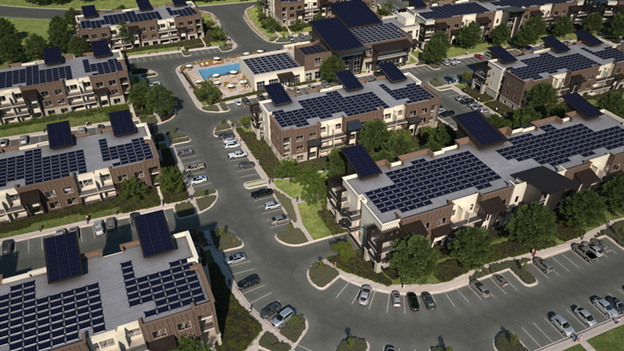How Hard Is It to Build A Virtual Power Plant Anyway?
Source: Jeff Postelwait · T&D WORLD · | March 2, 2021
A closer look at the concepts and technology that will change the way we use electric power.
Source: T&D World
Nine years ago, I wrote a story for Utility Products magazine called “Solar Forecasting: The Next Big Thing for Solar Power?” I talked to researchers from San Diego who spoke about clouds that “behave” better than others and knowing how powerful the sun will be in a particular location and time means everything when it comes to predicting how bankable and deliverable the solar resource is.
The striking thing about it was they weren’t even using technology that was that advanced. Photovoltaic solar panels themselves have been around since the late 1800s. The project used rounded, silvered “fisheye” mirrors that reflected the skies, reminding me of something from the disco era. Those mirrors were photographed with ordinary cameras, producing live images of the sky over a solar project in real time. What had changed and made solar forecasting possible, researchers said at the time, was how powerful their computers were.
Machines with higher processing power combined with faster remote communications networks — and the lowered cost of both — were the factors that really made this application possible. Taking photos of the sky and combining this with detailed climatological and meteorological data from the area going back years was an elegant solution, combining our knowledge of the past and the data available to us in the present. But could it yield the energy grid of the future?
Now solar power is growing faster than ever. The new administration in the White House is gearing up for a round of renewable energy and distributed energy resource (DER) investment similar to what President Obama was doing when I wrote that story. Back in 2012, utilities had yet to surpass 3 GW of installed solar capacity, according to data from the Solar Energy Industries Association. Last year, utilities reached 53.3 GW of cumulative installed capacity. We are capturing and using more of the sun’s rays, sure, but are we using them as effectively as we could be?

